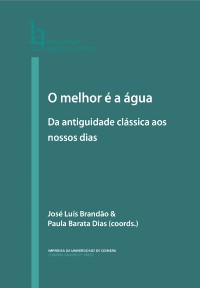Please use this identifier to cite or link to this item:
https://hdl.handle.net/10316.2/45108| Title: | Entre o fogo e a água: real e simbólico na representação literária do martírio (Paciecidos de Bartolomeu Pereira, Coimbra, 1640) | Other Titles: | Between fire and water: real and symbolic in the literary representation of martyrdom [Paciecidos by Bartolomeu Pereira, Coimbra, 1640]) | Authors: | Urbano, Carlota Miranda | Keywords: | Neolatin literature;martyrdom;Jesuits;water;fire;renaissance humanism;epic poetry;Literatura novilatina;martírio;jesuítas;água;fogo;humanismo renascentista;poesia épica | Issue Date: | 2018 | Publisher: | Imprensa da Universidade de Coimbra | Journal: | http://hdl.handle.net/10316.2/45094 | Abstract: | The present study takes as its corpus a neolatin epic poem, Paciecidos libri duodecim, from the Jesuit Bartolomeu Pereira, celebrating the life and martyrdom of Father Francisco Pacheco as well as that of eight companions, burned alive in Nagasaki in 1626. Published in the 1640, the poem follows the epic Renaissance Homeric-Virgilian model. In this paper, the author studies fire and water as literary
motifs in the representation of martyrdom, taking into account the context of biblical imagery and classical tradition. The paper also studies the symbolic value of these elements and the related historical facts, concluding that, in this poem, water represents the object of essential human desire in both symbolic and real-world contexts. O presente estudo toma como corpus um poema épico novilatino (Paciecidos libri duodecim) da autoria do jesuíta Bartolomeu Pereira que celebra a vida e o martírio do Padre Francisco Pacheco juntamente com oito companheiros, queimados vivos, em Nagasaki, no ano de 1626. Publicado em 1640, o poema segue o modelo épico renascentista de tipo homérico-virgiliano. No estudo em causa, a autora trata o fogo e a água como motivos literários na representação do martírio, no contexto do imaginário bíblico e da tradição clássica. O estudo relaciona ainda o valor simbólico destes elementos com os factos históricos que lhe serviram de pretexto e conclui que, neste poema, a água representa simbólica e realmente o objeto de desejo essencial do homem. |
URI: | https://hdl.handle.net/10316.2/45108 | ISBN: | 978-989-26-1567-7 978-989-26-1568-4 (PDF) |
ISSN: | 2182-8814 | DOI: | 10.14195/978-989-26-1568-4_13 | Rights: | open access |
| Appears in Collections: | O melhor é a água: da antiguidade clássica aos nossos dias |
Files in This Item:
| File | Description | Size | Format | |
|---|---|---|---|---|
| entre_o_fogo_e_a_agua.pdf | 803.11 kB | Adobe PDF |  |
Items in DSpace are protected by copyright, with all rights reserved, unless otherwise indicated.
